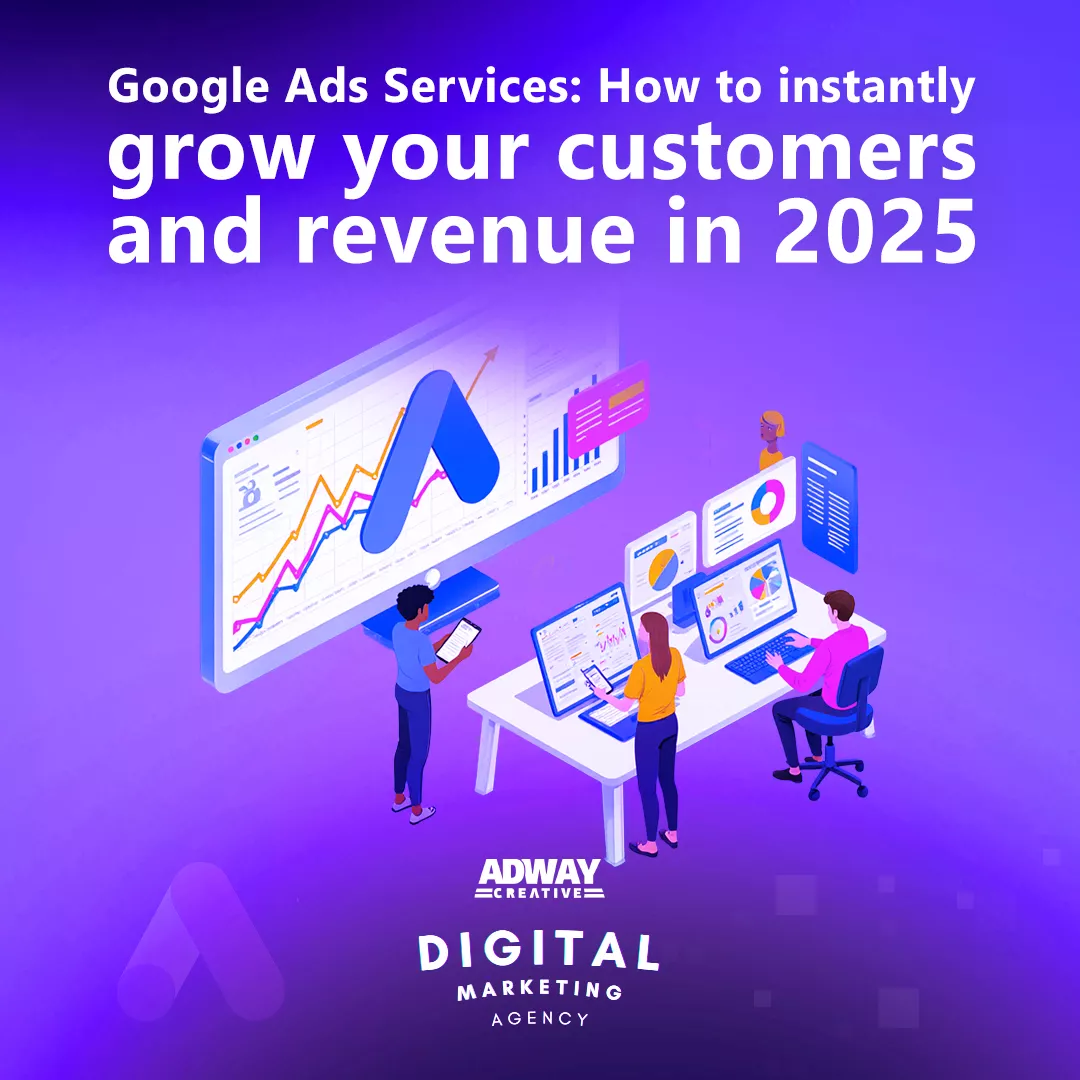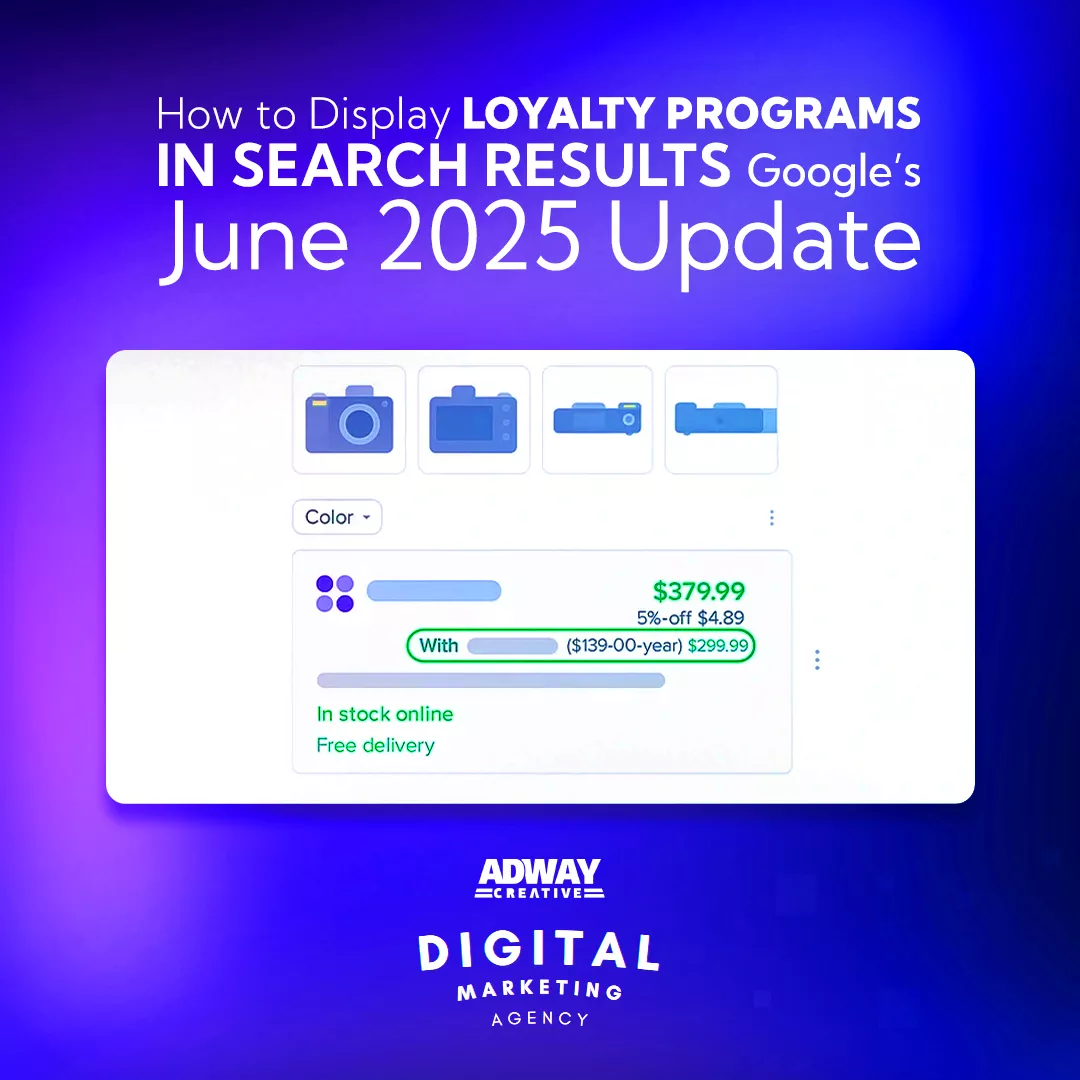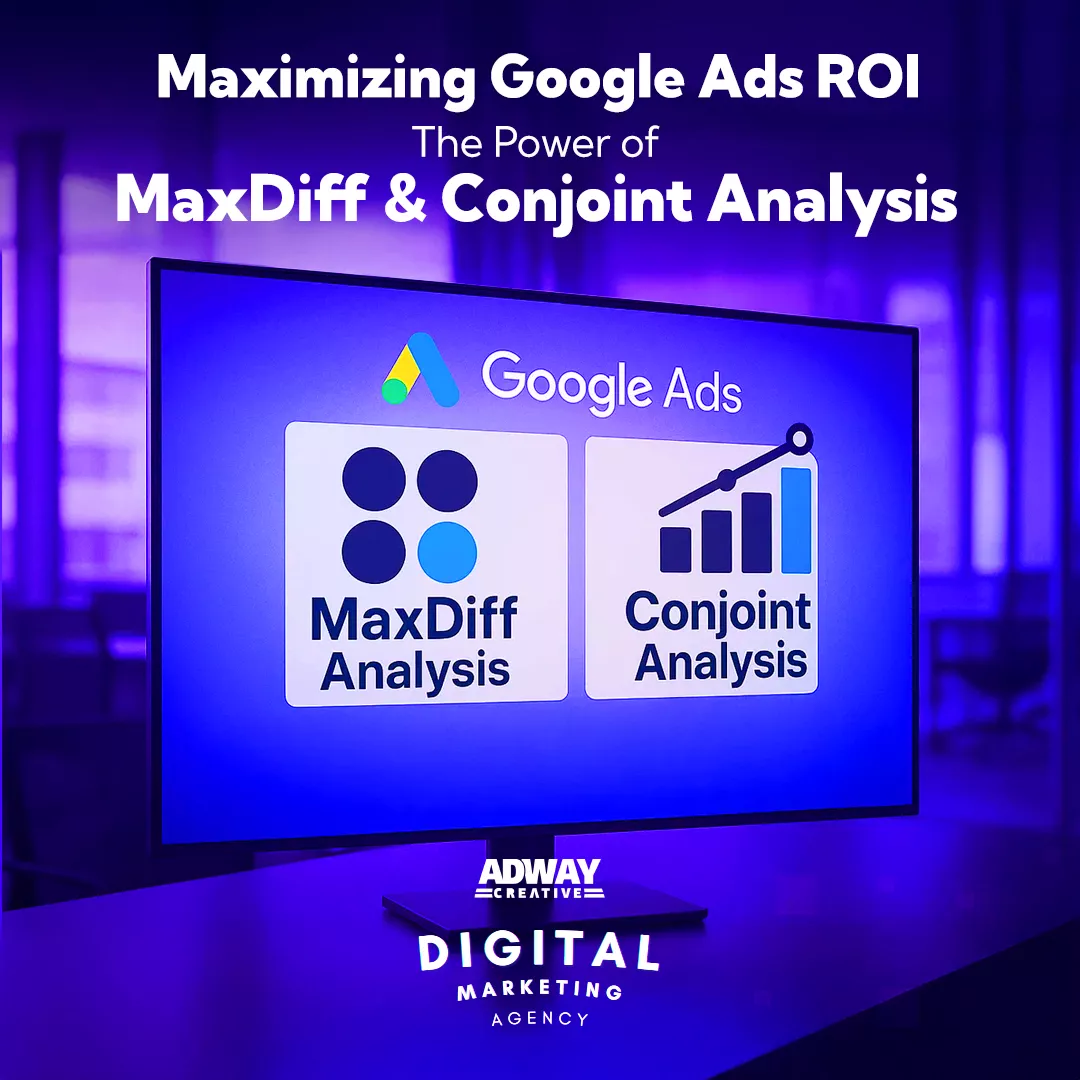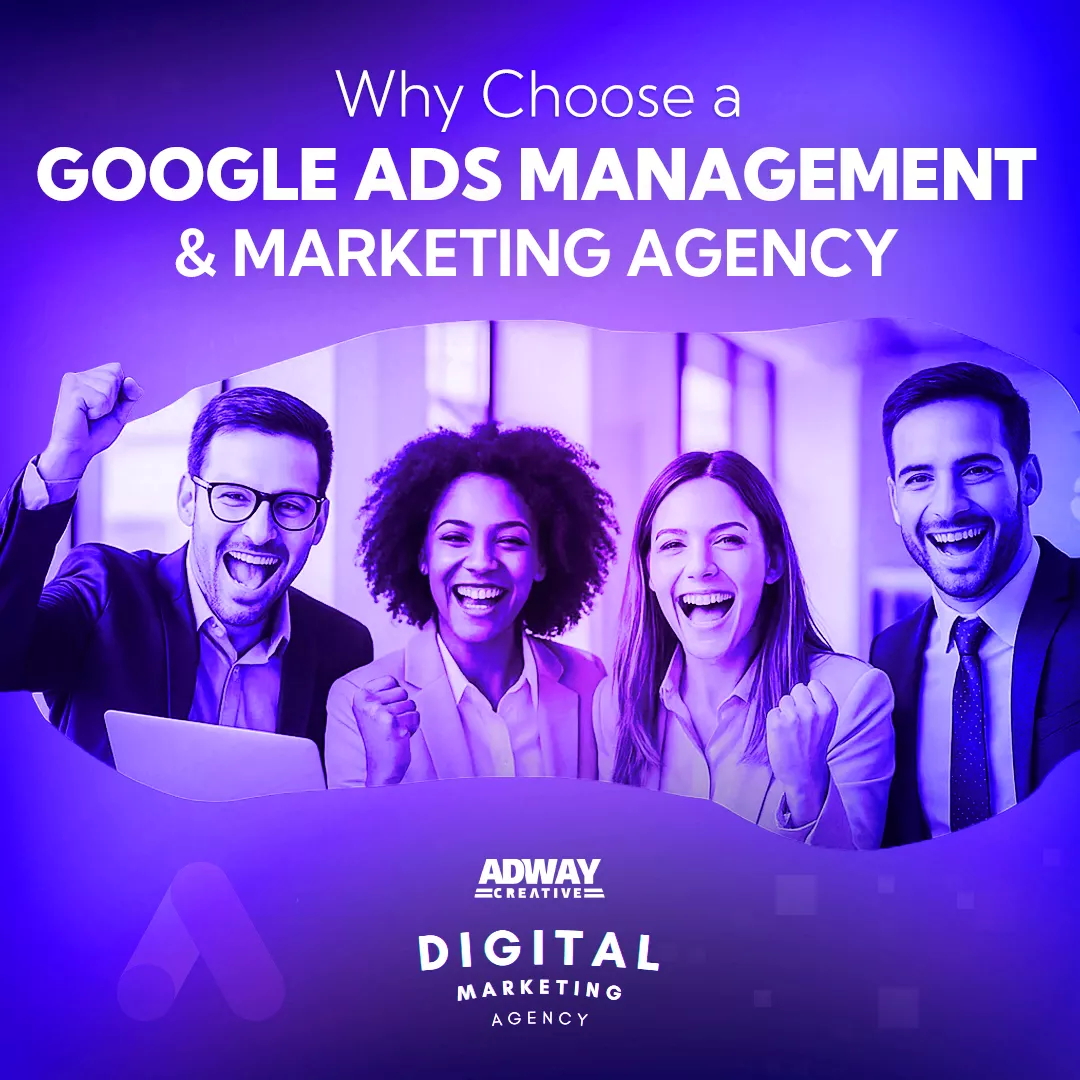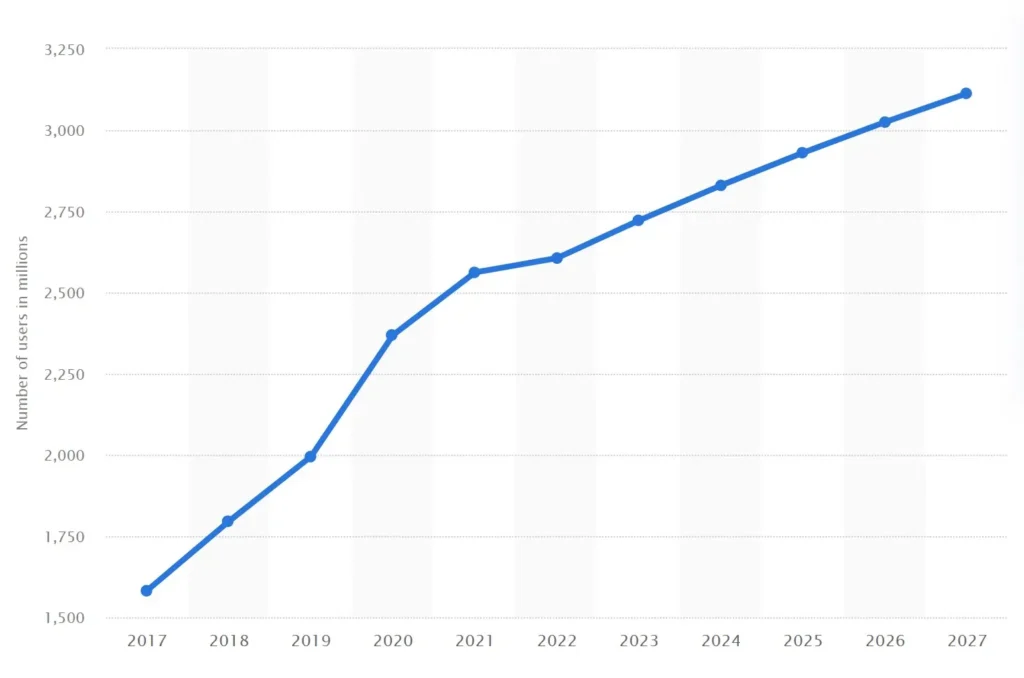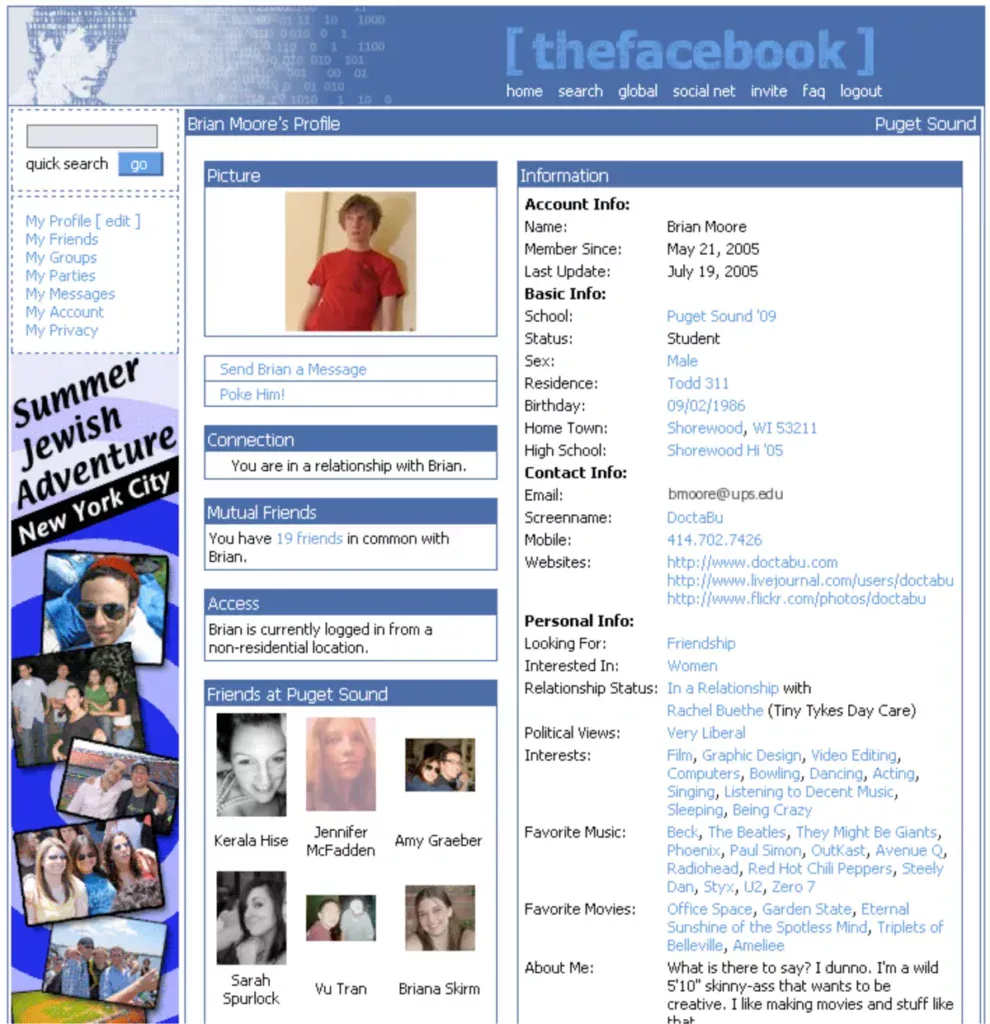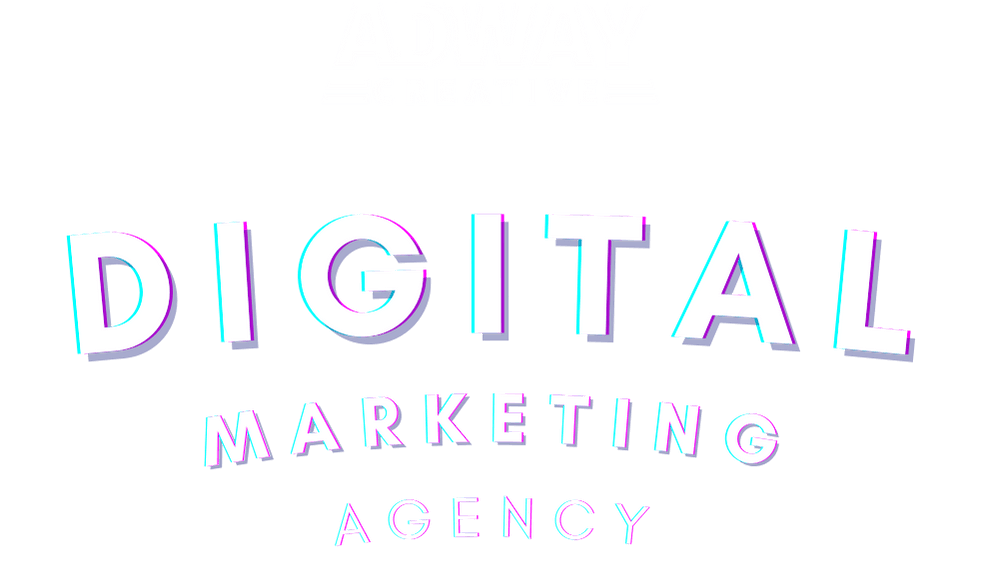
Ad Creative Testing Strategy. The Best Practices to Find the Winning Ad.
Get Maximum Viewer Engagement.
Table of Contents

Amidst the plethora of testing methodologies, the AD Pre-Analyze technology emerges as a transformative force, allowing for the prediction of attention-grabbing scores for ad creative elements before the campaign launch.
This revolutionary approach ensures that your advertisements attract the eye and do so with 97% precision, aligning with the strategic objectives of your campaign.
Optimizing Your Ad Design for Maximum Impact with AD Pre-Analyze.
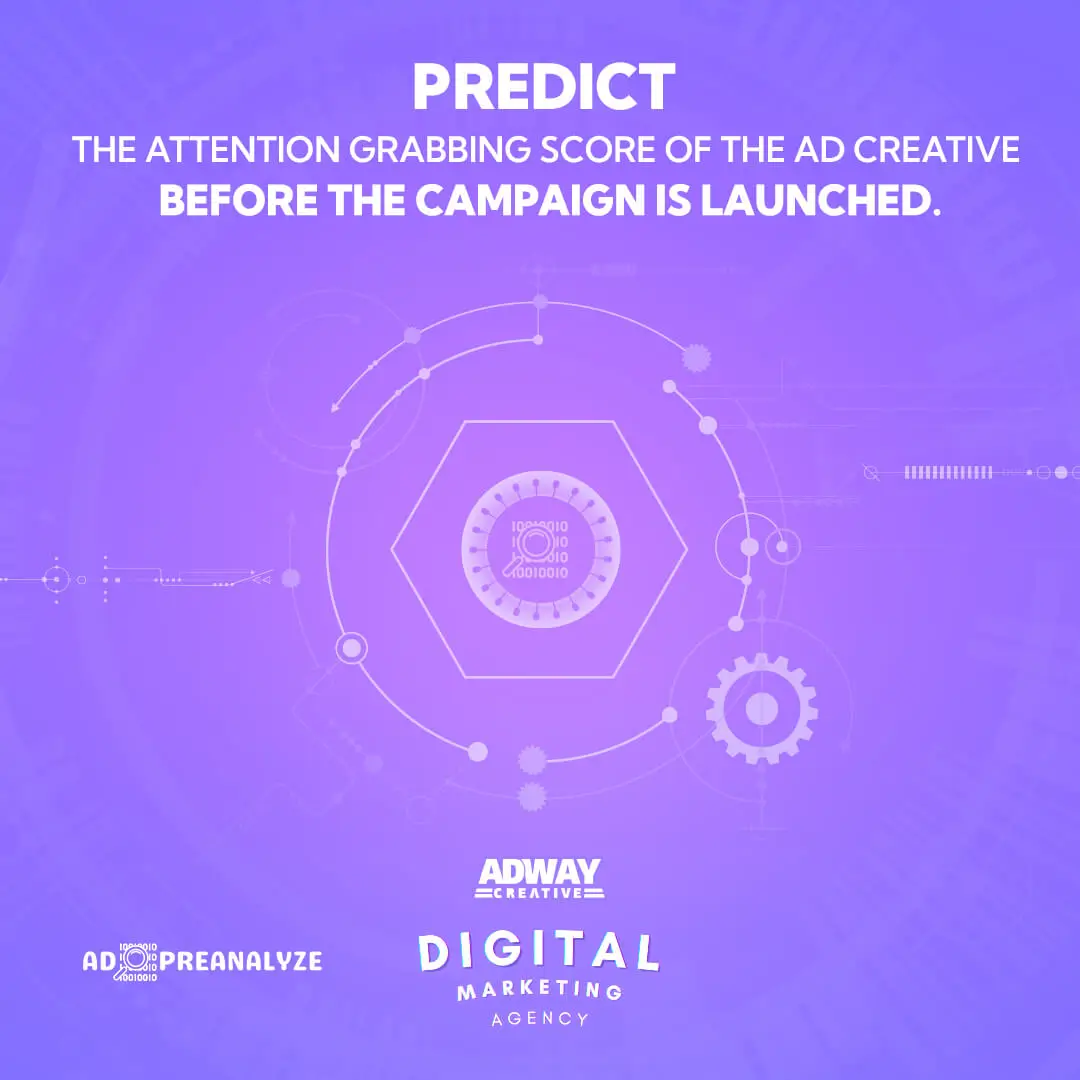
With our AD Pre-Analyze service we do just that – leveraging predictive eye-tracking technology brings forth a new era of customization.
This tool simulates viewer attention patterns, strategically highlighting elements that naturally capture focus.
The result? A design that transcends the ordinary, ensuring your audience is captivated from the first glance.
Furthermore, AD Pre-Analyze doesn’t stop at simulation; it takes your ad designs into the real world.
From social media feeds to billboards, we conduct tests in authentic scenarios.
Here is how we ensure your ads look visually stunning and perform exceptionally well in diverse environments.
The fusion of predictive technology and real-world testing elevates your ad designs to a new level.
Case in Point: The Miriam Swimwear Success Story.

Take a look at our Miriam Swimwear case study for a shining illustration of the remarkable capabilities of our AD Pre-Analyze technology.
Harnessing this technology, we developed Facebook ad creatives that engaged users in a significant way, hitting unparalleled milestones in terms of involvement and conversion rates.
Miriam Swimwear celebrated over 600 sign-ups with a stunningly low CPC of $0.32, demonstrating highly effective lead capture.
This success can be largely attributed to personalized ads, groundbreaking marketing messages, and compelling content that boost engagement and conversions.
The Creative Elements Enhancement Process.

The process of using predictive eye-tracking technology includes the following steps.
- Analysis of current performance: The first step in the enhancement process is to analyze the current performance of the creative.
- Identification of weak points: Once the current performance is analyzed, the next step is to identify weak points in the design. This could be anything from unclear messaging to ineffective design. By using predictive eye-tracking technology, it’s possible to identify which areas of the visual design are not capturing the viewer’s interest.
- Development of improvement strategies: With the weak points identified, the next step is to develop strategies to improve the ad design. This could include A/B testing of different designs, rewriting of messaging, or changing the placement of elements on the digital platform. Predictive eye-tracking technology helps in understanding how potential changes can impact user engagement.
- Implementation of improvement strategies: The next step is to implement them once they are developed. This could involve making changes to the visual components of the digital platform and monitoring the impact of these changes on user engagement.
In conclusion, the enhancement process involves:
- A thorough analysis of current performance.
- Identification of weak points.
- Development of improvement strategies.
- Implementation of these strategies.
Predictive eye-tracking technology plays a crucial role in each of these steps by providing valuable insights into user behavior and helping to validate the effectiveness of improvement strategies.
Strategic Adaptation. Experimentation. Data-Driven Decision Making.

AD Pre-Analyze empowers them to strategically adapt their marketing approach by conducting experiments to test various ad designs.
By collecting and analyzing data from these experiments, marketers can make data-driven decisions about which creative elements are most effective in reaching their target audience.
This approach allows you to stay ahead of the curve and capitalize on emerging trends in the ever-evolving advertising landscape.
AD Pre-Analyze provides the ability and insights needed to keep a finger on the market’s pulse and make informed decisions that drive success.
Strategies and Best Practices for Creative Testing.

It’s important to have a clear strategy in place for creative testing.
By implementing best practices, such as using A/B testing, gathering feedback from target audiences, and keeping the testing process iterative, you can continually improve the ad performance and get your creative assets to work for you.
Remember, every test provides valuable insights that can lead to more impactful and effective marketing campaigns. Here are some techniques that you can start using right away.
A/B Split Testing With AD Pre-Analyze.

Before running an A/B split test, conduct a pre-analysis of the ad creative to identify potential areas for improvement.
The approach could include analyzing elements such as the headline, visuals, call-to-action, and overall messaging.
By identifying potential weaknesses in the ad creative, you can develop more targeted A/B test variations to address these areas.
- Test One Element at a Time: When conducting A/B split testing, testing only one element at a time is important. This method involves testing diverse types of headlines, visuals- or calls to action but only changing one element per test. By isolating each element, you can accurately determine which specific changes impact performance most.
- Utilize Control Groups: When conducting A/B split testing, include a control group that receives the current ad creative without any changes. This approach allows you to accurately measure the impact of the test variations compared to the original creative.
- Set Clear Goals and KPIs: Establish clear goals and key performance indicators (KPIs) you want to test so you can measure success before conducting creative testing. The process could include click-through rate, conversion rate, or return on ad spend. By setting clear objectives, you can measure the impact of creative testing and make more informed decisions.
- Consider Audience Segmentation: When conducting creative testing, consider segmenting your audience to determine which variations perform best for different demographics or user segments. This could involve testing different ad creatives for different age groups, geographic locations, or buyer personas.
- Monitor Results and Iterate: Once the A/B split testing is complete, closely monitor and iterate on the findings. This could involve implementing the winning variation as the new control and conducting additional tests to optimize ad performance.
- Incorporate Customer Feedback: User feedback is a goldmine for ad design testing. Test their ad by actively seeking feedback and insights. Many brands run their ad campaigns based on user preferences.
At AdwayCreative Digital Marketing Agency, we understand that testing involves testing various types of ad creatives, ensuring the audience has seen your ad without encountering ad tiredness.
By implementing these strategies and best practices for creative testing, marketers can make more informed decisions and improve the performance of their ad creatives.
Optimizing Your Facebook Ad Sets to Perfection.

Segmenting ad sets based on target audience demographics, interests, or behaviors can optimize creative testing and improve ad delivery.
Creating specific sets for different audience segments allows you to tailor your creative and messaging to resonate with each group.
Here are some steps to optimize ad groups to perfection:
- Identify Audience Segments: Use the targeting options available on your advertising platform to segment your audience based on demographics, interests, or behaviors.
- Create Specific Ad Sets: Once you have identified your audience segments, create separate sets for each segment.
- Test Different Creatives: Within each set, try testing a range of creatives to see which resonates best with the audience.
- Monitor Performance: Keep a close eye on the performance of each group and the individual creatives within them. Look at click-through rate, conversions, and engagement metrics to determine which creatives perform best.
- Optimize Based on Data: Use the data collected from your ad groups to make informed decisions about which creatives are most effective. Allocate more budget to the top-performing sets and creatives, and pause or adjust underperforming ones.
- Continuously Test and Iterate: Don’t rest on your laurels once you succeed with a specific ad group or creative. Consumer preferences and behaviors can change, so continue testing and iterating to ensure your ads are optimized for maximum performance.
By segmenting the sets and testing your creatives, you can optimize your ads to perfection, finding the winning ads faster than ever and improving your ad performance.
More Conversions With Multivariate Testing.
This approach provides in-depth insights into the combined effects of different design components, enabling a more comprehensive understanding of audience preferences and behavior.
For example, you can test an ad with a red headline, black body text, and a blue call-to-action button against an ad with a blue headline, red body text, and a black call-to-action button.
The possibilities are virtually endless, enabling you to find the perfect combination that appeals to your target audience.
The advantages of multivariate testing are numerous.
- First, it saves time – you test all variables at once, rather than one by one.
- Second, it provides more accurate data – because all components are tested simultaneously, you can see how they interact.
Keep in mind, though, that the key to successful multivariate testing is the large traffic volume needed to generate statistically significant results, so it’s best suited for businesses with a high number of website visitors or ad impressions.
In conclusion, multivariate testing is a powerful tool for improving ad results.
By having the knowledge to optimize your ads and how different design elements work together to influence audience behavior, you can craft more compelling ad creatives that drive conversions and boost your bottom line.
Navigating Ad Fatigue: Testing as Many Ads As Possible.

To combat the risk of the audience seeing your ad too many times which causes ad fatigue, it becomes imperative to test as many ads as possible strategically.
One way to do this is by utilizing A/B testing, where you simultaneously run different ad versions to see which one performs better.
This strategy lets you constantly refresh your ad creatives and messaging to prevent audience fatigue.
Another approach is to test different ad formats, such as video, carousel, poll ads, or slideshow ads, to keep your audience engaged with your ad and interested.
You can also test different targeting parameters to reach new audiences and prevent repeatedly showing the same ad to the same people.
Additionally, regularly updating your ad copy, visuals, and calls to action can help keep your ads feeling fresh and avoid or reduce ad fatigue.
Ultimately, the key to navigating ad tiredness is continuously testing and optimizing your ads to keep them relevant and engaging.
Testing as many ads as possible can prevent audience fatigue and ensure your creative strategy efforts remain effective.
The Benefits of Testing Your Ad During the Design Process.

Imagine coupling this approach with the power of AD Pre-Analyze.
Before your campaign even launches, this technology allows you to pre-analyze potential attention-grabbing scores, giving you insights into the effectiveness of various creative elements.
There are several benefits to testing your ad during the design process:
- Early identification of issues: By trying a variety of ad designs early in the process, you can identify potential issues or areas for improvement before investing in the full production and launch of the campaign. Adopting this practice can save time and resources in the long run.
- Insights into effectiveness: Testing allows you to gain valuable insights into the creative elements that capture viewers’ interest and drive engagement. This process informs the design process and helps you create more impactful ads.
- Optimization of messaging and visuals: Through testing, you can refine your ad’s messaging and visual components to ensure they resonate with your target audience. This approach can increase the overall effectiveness of your ad and drive better results.
- Data-driven decision-making: Testing your ad during the design process allows you to make data-driven decisions based on highly accurate predictive scores. This technique can help create ads more likely for your target to interact with.
- Enhanced creative brainstorming: Trying out a variety of advertising designs can inspire new creative ideas and strategies. You can foster a more innovative and dynamic creative process by exploring different concepts early on.
In conclusion, testing your ad during the design process offers numerous benefits to help you create more effective and impactful ad campaigns.
After you find competitors ads, then by leveraging technology like AD Pre-Analyze, you can optimize your ad designs for maximum impact.
Understanding Eye-Tracking Results for Image-Based Ads.
Eye-tracking is a research method in which a specialized tool tracks and records participants’ eye movements as they view a stimulus, such as an image-based ad.
This tool measures the point of gaze (where the eyes are focused) and the duration of each fixation (how long the eyes stay focused on a particular area).
The AD-PreAnalyze Predictive Eye-tracking, on the other hand, delivers nearly identical results.
By analyzing eye-tracking data provided by AD-PreAnalyze, we can gain insights into how people interact with image-based ads and understand which elements attract and engage their interest.
This information is valuable for marketers and advertisers as it helps them optimize their ad designs to make them more effective and impactful.
When interpreting eye-tracking results for image-based ads, there are several key metrics and patterns to consider:
- Fixation duration: Longer fixations indicate that the ad has captured the viewer’s eye, while shorter fixations may suggest that the ad needs to be more engaging.
- Heat maps: These visual representations show the areas of the ad that received the most and least interest. The heatmap has hot spots that indicate high levels of eye focus, while cold spots indicate largely ignored areas.
- Gaze path: This shows the sequence of fixations and saccades (rapid eye movements) made by the viewer, revealing the order in which different ad elements were observed.
- Attention distribution: This metric provides insights into the overall distribution across the ad, highlighting which elements attracted the most eye gaze and which were overlooked.
Understanding these metrics and patterns allows advertisers to make data-driven decisions about their image-based ads’ design, layout, and content.
It can help them identify which elements to prioritize, such as images, headlines, or calls to action, and how to arrange them for maximum impact.
In conclusion, eye-tracking data provides valuable for marketing insights into how people interact with image-based ads, helping advertisers understand and optimize the visual elements that capture awareness and drive engagement.
By leveraging this information, advertisers can create compelling ads that resonate with their target audience.
Effective Non-Digital Ad Creative Testing is Possible.
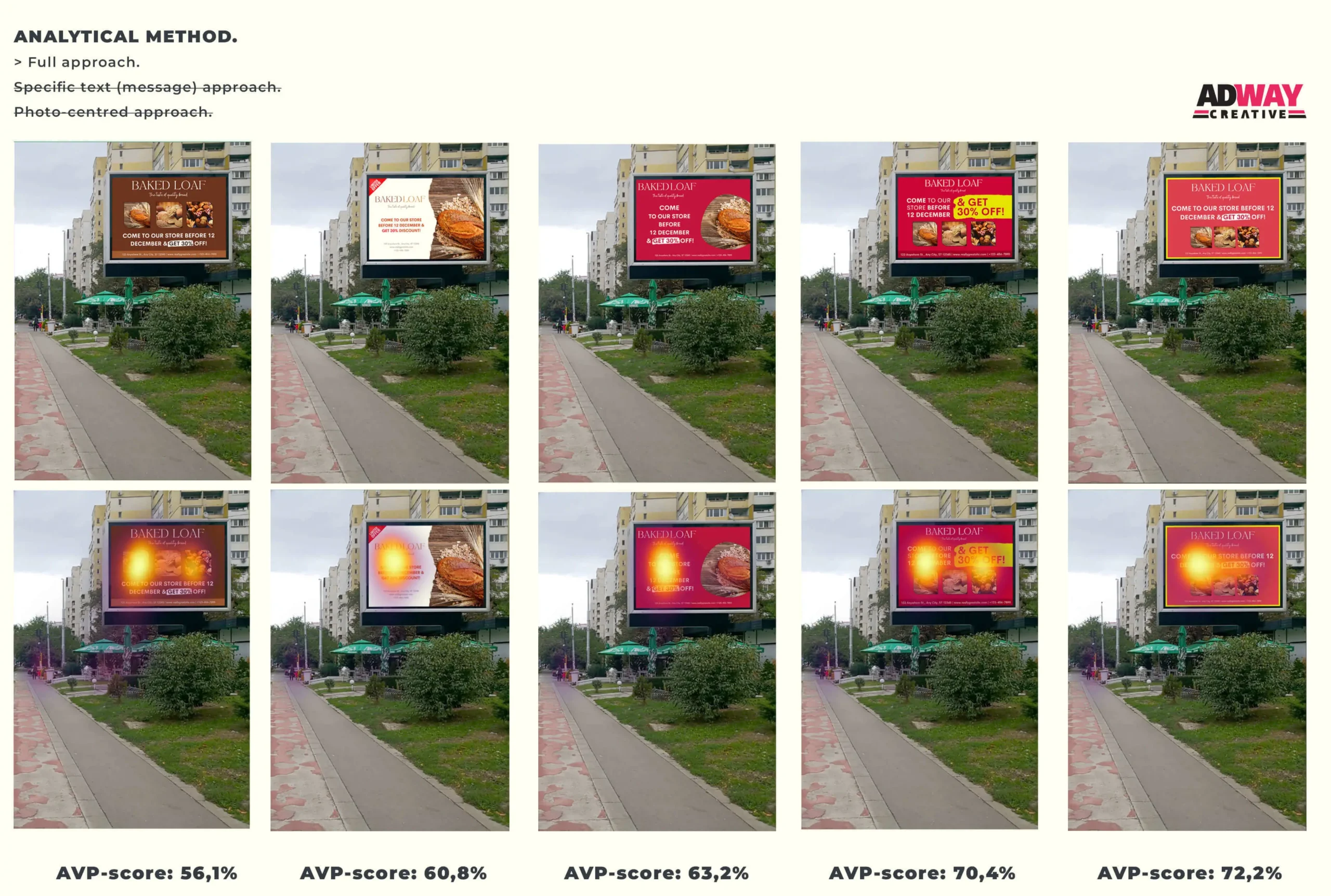
Imagine being able to conduct testing for every real-world ad scenario, like billboards, city light panels, print ads, bus stop shelters, or in-store displays, before investing heavily.
AD Pre-Analyze makes it all possible! AD Pre-Analyze allows you to evaluate your ad creatives‘ potential impact and effectiveness in non-digital environments.
So how does it work? The tool carefully simulates the real-world viewing conditions of each ad scenario.
It envisages various potential situations like different light conditions, distances, viewing angles, etc., to examine the visibility and overall impact of the ads.
You can analyze how your ad would perform in different real-world situations by imitating these conditions in a controlled environment.
Using this innovative process, advertisers can gain valuable insights into which proposals might work and identify necessary improvements to optimize their ad campaigns.
It further helps to evaluate the overall design and readability of the message; its attention-grabbing and even its emotional impact when combined with our SemantiQSpark analysis service.
Using tools like AD Pre-Analyze, advertisers and companies can save time and money and ensure their campaigns generate optimal ROI.
Innovative and effective methods like this ensure that non-digital ad visual elements testing is possible, efficient, and reliable.
Ultimately, it isn’t just about making ads; it is about ensuring they have the desired effect on your target audience, regardless of their medium or platform.
So why guess or assume when you can undertake non-digital ad creativity testing and eliminate risks while enhancing your campaigns’ success rate and effectiveness?
Why Are Companies Testing Their Ads and Continuously Testing New Creatives?

There are a few reasons why companies want to test their ads and continuously try new creatives:
- Audience relevance: Consumer preferences and behaviors constantly evolve, so companies must ensure their ads resonate with their target audience. Testing ads allows companies to gather feedback and insights on what messaging and creatives are the most effective in capturing their audience’s eyes.
- Performance optimization: By testing a variety of creatives, companies can identify which drives the best results regarding click-through rates, conversions, and overall ad performance. These steps allow them to allocate their advertising budget more efficiently and maximize their return on investment.
- Adapting to market changes: The competitive landscape is constantly changing, and companies need to be agile in adapting their advertising strategies to stay ahead. Continuous testing of new ad creatives allows companies to stay on top of market trends and shifts in consumer preferences.
- Brand consistency: Testing ads helps companies ensure their messaging and creatives are consistent with their brand identity and values.
- Innovation and creativity: Constantly testing new ad creatives allows companies to push the boundaries of their creativity and innovation, leading to fresh and engaging campaigns that capture consumer attention.
In conclusion, ad testing and continuously testing new creatives and then learning from the test are essential for companies to stay relevant, optimize performance, adapt to market changes, maintain brand consistency, and drive innovation in their advertising efforts.
Quick Answers: Your Article Recap FAQs Addressed.

If you’re short on time and prefer quick answers, check out the summarized Q&A below for a rapid overview.
Q: What does the creative testing involve?
A: An ad creative testing involves testing every individual creative element you want to test. This could be different visuals, copies, or advertising placements. You usually test one variable per creative to ensure that you can easily track what is impacting its efficiency.
Q: Why should I test my ads in one ad set?
A: Because it is beneficial because it allows for a more direct and fair comparison between the performance of the various advertisements. This can offer the depth of creative intelligence and insights into what works and what doesn’t.
Q: How do I conduct an ad test on Facebook(fb)?
A: To conduct an ad test on Facebook, you need to create multiple advertisements within a set and then allocate a budget for each of them. You should select one element you want to test per ad, run the ads for a specific period of time, and then analyze the results based on the performance of those ads.
Q: What are the benefits of continuous testing?
A: Continuous testing allows for continuous improvement of ad efficiency. Another benefit of continuous ad testing lies in the depth of creative intelligence it provides, giving you more data and insights into what elicits the best response from your target audience.
Q: What is multivariate ad testing?
A: Multivariate testing involves testing various ad elements simultaneously to determine which combination performs the best. Best automated multivariate testing platforms let you choose different variables to test in a single creative set and automates the entire multivariate testing process
Q: Why is not advisable to rely on testing alone?
A: Relying on testing alone is no longer enough because the digital advertising landscape is dynamic and constantly changing. Thus, consistent testing, as well as constant adjustment and optimization, are required.
Q: What is the importance of testing one variable per ad?
A: Testing one variable per ad simplifies the process of analyzing what’s making an ad perform more or less well. If you test multiple variables in one ad, it will be difficult to conclude what changes affected the ad performance.
Q: What platforms are best for ad testing tools?
A: That largely depends on your specific requirements and budget. However, many advertisers prefer Facebook because they receive high traffic, and it offers a robust and user-friendly testing platform. Plus there are various automated multivariate testing platforms available.
Q: Where could testing ads in one ad set be utilized?
A: Testing ads in one set can be utilized across various platforms including social media sites like Facebook, banner ads on Google, or even on your own website. The idea is to keep the variables constant and to test your ads.
Q: Is there a definitive guide to knowing what to test in my ads?
A: There isn’t a definitive guide as the element you want to test can vary depending on your business, audience, and marketing goals. However, some commonly tested elements include the ad copy, images, call-to-action buttons, and ad placement.
- About the Author
- Latest Posts
- Client Results
With over fifteen years of hands-on experience in PPC, SEO, content marketing, and social media, Iliya Avramov has honed his expertise through strategic collaborations with global teams, mastering the art of blending traditional marketing strategies with cutting-edge digital services and technologies. His deep understanding of digital trends—backed by a proven track record of scaling campaigns for startups, B2B enterprises, and e-commerce brands—ensures businesses achieve sustainable growth, with measurable ROI increases of up to 540% in competitive online landscapes.
Iliya specializes in data-driven strategies, including advanced PPC optimization (e.g., Google Ads and Meta campaigns), technical SEO audits, content creation that drives organic traffic, and social media engagement that boosts brand loyalty. He has successfully managed marketing budgets from $1,000 to over $100,000 monthly, generating thousands of leads and conversions across industries like agriculture, health, and retail. Proficient in tools such as Google Analytics, SEMrush, Ahrefs, and AI-powered analytics, Iliya’s innovative approaches are supported by insights from leading resources like Google Search Central for SEO updates and Think with Google for data-driven marketing, ensuring alignment with the latest best practices.
His leadership has earned AdwayCreative numerous industry recognitions, including:
- 2020: Mastery in 3D visualizations and graphic design (Acquisition International).
- 2021: Media Innovator Award (Corporate Vision).
- 2022: Martech Award (Corporate Vision).
- 2022: Global Finance Award (Global Banking & Finance).
- 2023: Global Finance Award (Global Banking & Finance).
- 2023: Best Full Service Marketing and Advertising Agency (Innovation in Business).
- 2024: Bulgaria’s Most Reviewed Social Media Marketing Agency (The Manifest/Clutch).
- 2025: Advertising & Marketing Customer Satisfaction & Happiness Award (Global Banking & Finance).
Author Disclosure: Iliya Avramov is the founder of AdwayCreative and may reference agency services in his content. All opinions and strategies are grounded in over a decade of professional experience and independent industry research, with no undisclosed affiliations.
Publication Date: July 22, 2025 | Last Updated: July 22, 2025
- Google Ads Services: Drive Immediate Results with Expert PPC Management
- Google's Loyalty Program Update: How to Stand Out in Search | AdwayCreative
- Maximizing Google Ads ROI: The Power of MaxDiff and Conjoint Analysis
- Why Choose a Google Ads Management & Marketing Advertising Agency in 2025
- How Much Does Google Ads Cost? [EU Insights + Case Studies]
- Master the Customer Journey: Boost Retention, Loyalty & Revenue with Proven Marketing Strategies
See Real Results from AdwayCreative Clients
Curious what digital marketing can achieve for your business? Explore highlights from some of our recent success stories:
-
ROSELA | LEADING CUCUMBER PRODUCER GOES DIGITAL 🌱
Digital transformation brought 5,500+ new users, 1,808% boost in visibility, and 71% lower ad costs.
See more -
DA.CARE | SWISS STARTUP 👶
Swiss startup built a trusted UK brand with AI insights, 420+ subscribers in a month, and high-converting campaigns.
See more -
PARK&FLY ✈️
From zero to 100,000+ users and 40% repeat customers through integrated strategies.
See more -
ART:E 🎨
Over 500 new accounts activated, 12,000+ daily users, and reduced churn for an artisan platform.
See more -
MALEEVI TENNIS CLUB 🎾
220+ leads and 90% engagement growth in just 46 days.
See more -
MIRIAM SWIMWEAR 🩱
613+ new affiliate signups and acquisition costs as low as $0.32 per lead.
See more
See the full list of AdwayCreative case studies here →


